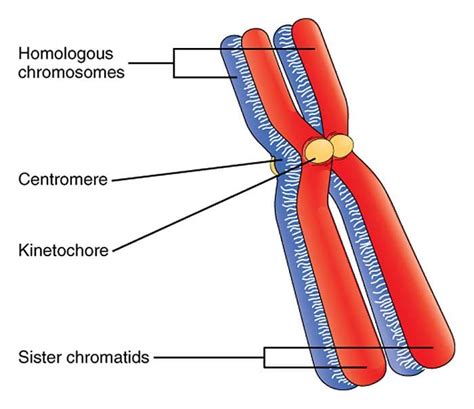
Homologous Chromosomes Line Up in the Center of the Cell: A Comprehensive Guide
Introduction
Meiosis, the process of cell division that produces gametes (eggs and sperm), is a complex and essential process for sexual reproduction. One of the key steps in meiosis is homologous chromosome alignment, in which homologous chromosomes (chromosomes that carry the same genetic information) line up in the center of the cell. This alignment ensures that each gamete receives a complete set of genetic material.

Homologous Chromosome Alignment in Meiosis
Step 1: Synapsis
The first step in homologous chromosome alignment is synapsis, in which homologous chromosomes pair up along their entire length. This pairing is mediated by a complex of proteins called the synaptonemal complex.
Step 2: Crossing Over
During synapsis, homologous chromosomes often exchange genetic material through a process called crossing over. This process involves the breaking and rejoining of DNA strands between homologous chromosomes, resulting in the creation of new combinations of genetic material.
Step 3: Chiasmata Formation
The points at which crossing over occurs are called chiasmata. Chiasmata hold homologous chromosomes together until they are separated during anaphase I of meiosis.
Step 4: Chromosome Condensation
As meiosis progresses, homologous chromosomes become highly condensed and visible under a microscope. This condensation facilitates their alignment in the center of the cell.
The Significance of Homologous Chromosome Alignment
Homologous chromosome alignment is essential for ensuring that each gamete receives a complete set of genetic material. If homologous chromosomes do not align properly, the resulting gametes may have an incorrect number of chromosomes, which can lead to developmental problems in the offspring.
Factors Affecting Homologous Chromosome Alignment
Several factors can affect homologous chromosome alignment, including:
- Synaptonemal complex proteins: These proteins are essential for synapsis and the maintenance of chromosome pairing. Mutations in these proteins can lead to errors in chromosome alignment.
- DNA damage: Breaks in DNA can interfere with synapsis and chromosome alignment.
- Chromosome size and shape: Larger chromosomes are more difficult to align than smaller chromosomes. Additionally, chromosomes with irregular shapes may not align properly.
Applications of Homologous Chromosome Alignment
The knowledge of homologous chromosome alignment has several applications in the field of biology, including:
- Genetic counseling: The identification of errors in chromosome alignment can help identify genetic disorders and provide information about the potential risks to offspring.
- Medical research: The study of homologous chromosome alignment has provided insights into the mechanisms of meiosis and the causes of genetic disorders.
- Chromosome engineering: Researchers are developing techniques to manipulate homologous chromosome alignment to create new genetic combinations for use in agriculture and medicine.
Step-by-Step Approach to Homologous Chromosome Alignment
To observe homologous chromosome alignment in a laboratory setting, the following steps can be taken:
- Collect a sample of cells: Cells from a variety of sources, including blood, skin, and bone marrow, can be used to observe chromosome alignment.
- Prepare the cells for staining: Cells are treated with chemicals to remove the cell membrane and cytoplasm, leaving only the chromosomes.
- Stain the chromosomes: Chromosomes are stained with a dye that makes them visible under a microscope.
- Observe the chromosomes under a microscope: The stained chromosomes can be observed under a microscope to identify homologous chromosomes and their alignment patterns.
Frequently Asked Questions
1. Why is homologous chromosome alignment important?
Homologous chromosome alignment ensures that each gamete receives a complete set of genetic material, which is essential for sexual reproduction.
2. What are the factors that can affect homologous chromosome alignment?
Factors that can affect homologous chromosome alignment include synaptonemal complex proteins, DNA damage, and chromosome size and shape.
3. What are the applications of homologous chromosome alignment?
The knowledge of homologous chromosome alignment has applications in genetic counseling, medical research, and chromosome engineering.
4. How can I observe homologous chromosome alignment in a laboratory setting?
To observe homologous chromosome alignment in a laboratory setting, cells can be collected, prepared for staining, stained with a dye, and observed under a microscope.
Conclusion
Homologous chromosome alignment is a fundamental process in meiosis that ensures the proper distribution of genetic material to gametes. By understanding the mechanisms of homologous chromosome alignment, researchers can develop new methods to diagnose and treat genetic disorders and create new genetic combinations for use in agriculture and medicine.











